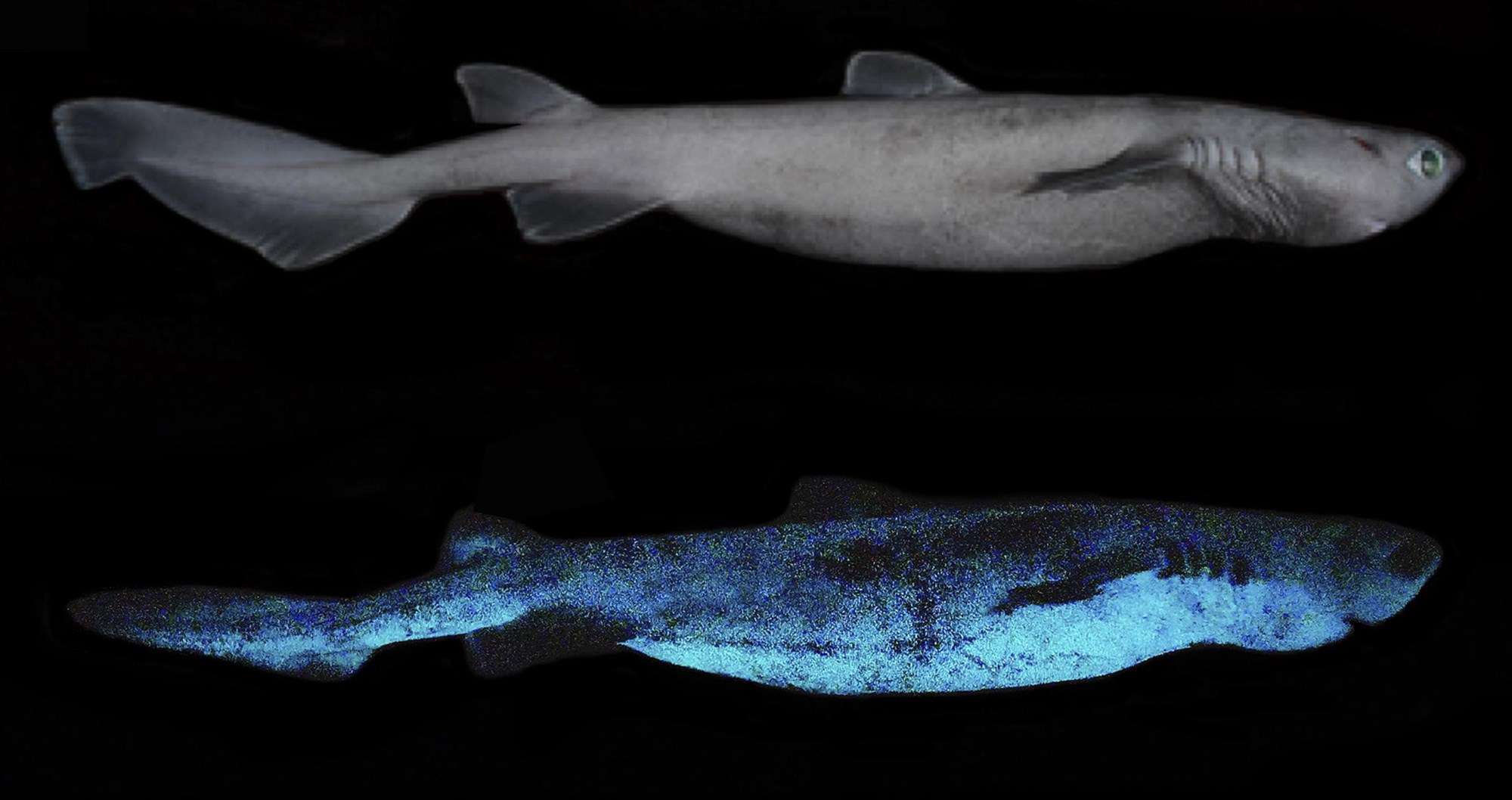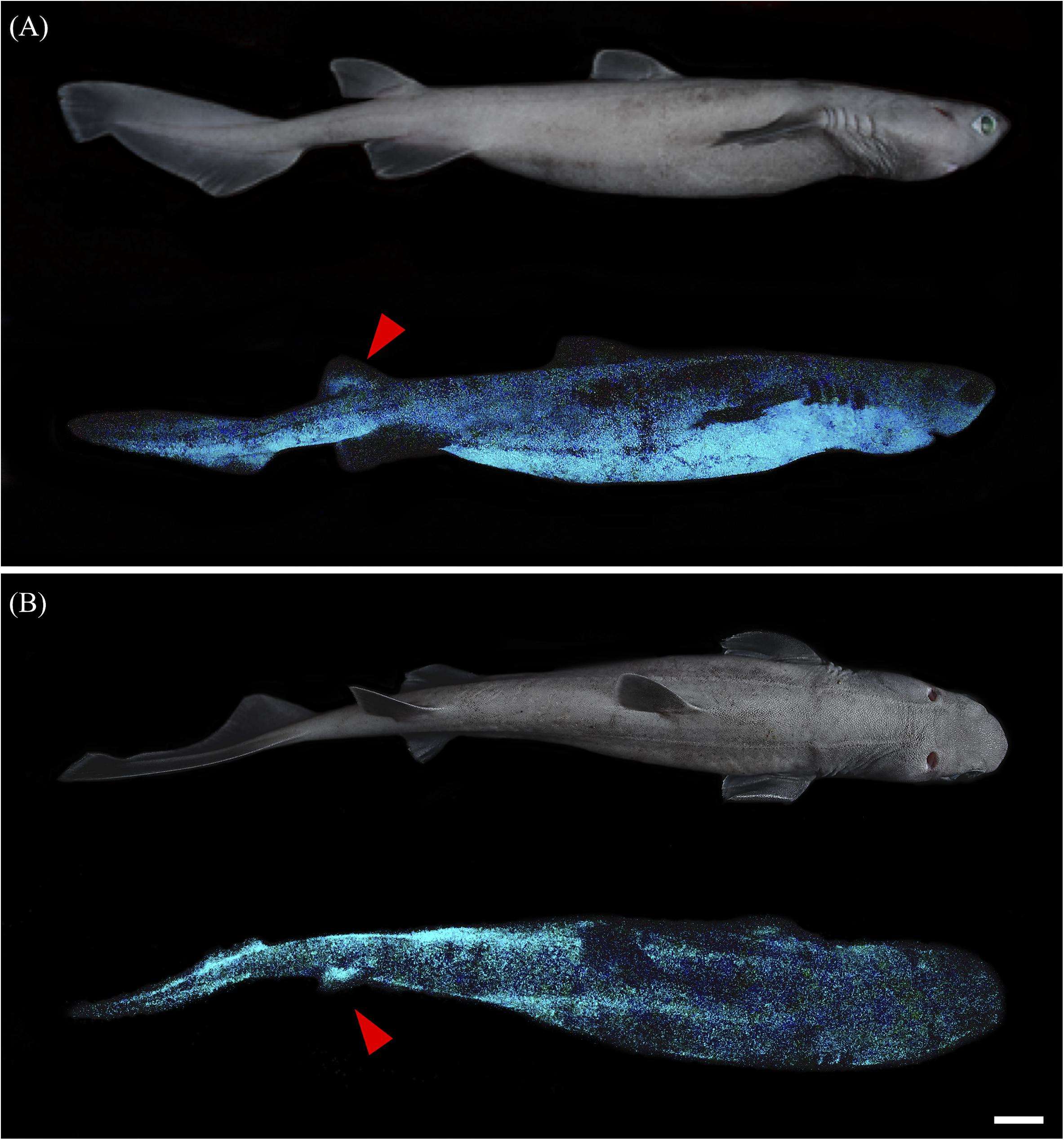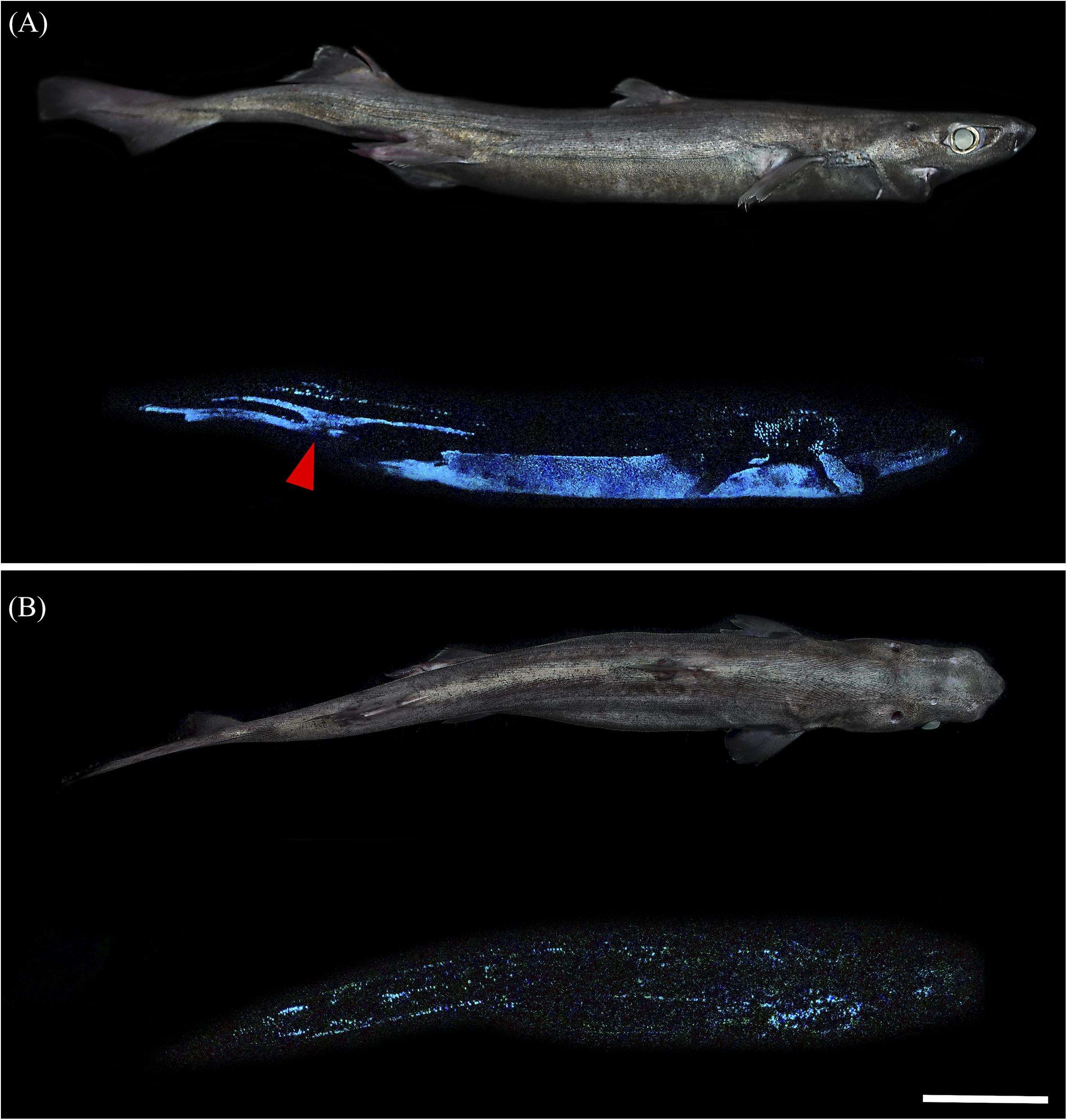Create a free profile to get unlimited access to exclusive videos, sweepstakes, and more!
Researchers spotlight 3 new glow-in-the-dark sharks, so at least we'll see them coming

One never knows what strange and wondrous creatures lurk far down in the Deep Blue Sea, and biologists in New Zealand who recently discovered three new species of glow-in-the-dark sharks can surely attest to that fact.
These self-illuminating shark specimens were accidentally gathered by Belgian and New Zealand researchers as the bycatch of a 2020 fisheries assessment survey conducted for the New Zealand Ministry for Primary Industries.
Here, off the Chatham rise just adjacent to the east coast of New Zealand, scientists witnessed the unusual luminescence of the kitefin shark, the blackbelly lanternshark, and the southern lanternshark for the first time ever.
In a new research paper published in the online journal Frontiers in Marine Science, the international team of biologists led by Professor Jerome Mallefet of the Catholic University of Louvain in Belgium details how these deepwater sharks' glow-in-the-dark skills were officially observed and documented.
The shimmering sharks reside far down in the sea's "twilight zone," from approximately 650 feet to 3,200 feet below the ocean where the sun's beams vanish and no photosynthesis can occur.
"Bioluminescence has often been seen as a spectacular yet uncommon event at sea but considering the vastness of the deep sea and the occurrence of luminous organisms in this zone, it is now more and more obvious that producing light at depth must play an important role structuring the biggest ecosystem on our planet," the researchers noted in the paper.
Able to grow to a length of nearly six feet, the kitefin shark (D. licha) is now cataloged as the largest-known luminous vertebrate and is normally at home cruising around 980 feet under the ocean where it hunts smaller sharks, assorted ground fish, crustaceans, and cephalopods.
The phenomenon of bioluminescence can be broken down and categorized as the generation of visible light by a living organism, and is a fairly common spectacle seen in a variety of marine creatures, especially those that dwell in the inky darkness of super deep waters where no light can penetrate.
This organic glow occurs through an internal chemical reaction where the species' luciferin molecules react with oxygen to produce light. The eerie emission has been noted in a variety of aquatic animals like squids and jellyfish, but never in any species of shark on Earth.
After their capture, each shark specimen was kept alive in a cold seawater tank in a dark cold room, where each fish was sexed, measured, weighed, and photographed in dim daylight and in darker conditions using Sony α7SII camera.
Mallefet and his researchers, in conjunction with the National Institute of Water and Atmospheric Research (NIWA) in Wellington, New Zealand, believe that these sharks produce their faint blue glow to camouflage themselves and not be backlit from brighter light originating from the surface.
Another theory is that the predators employ the self-illumination as a means to scan the ocean floor for their food sources.
"A special emphasis is placed on the luminescence of D. licha, the largest known luminous vertebrate," they stated in the study. "This first experimental study of three luminous shark species from New Zealand provides an insight into the diversity of shark bioluminescence and highlights the need for more research to help understand these unusual deep-sea inhabitants: the glowing sharks."
















